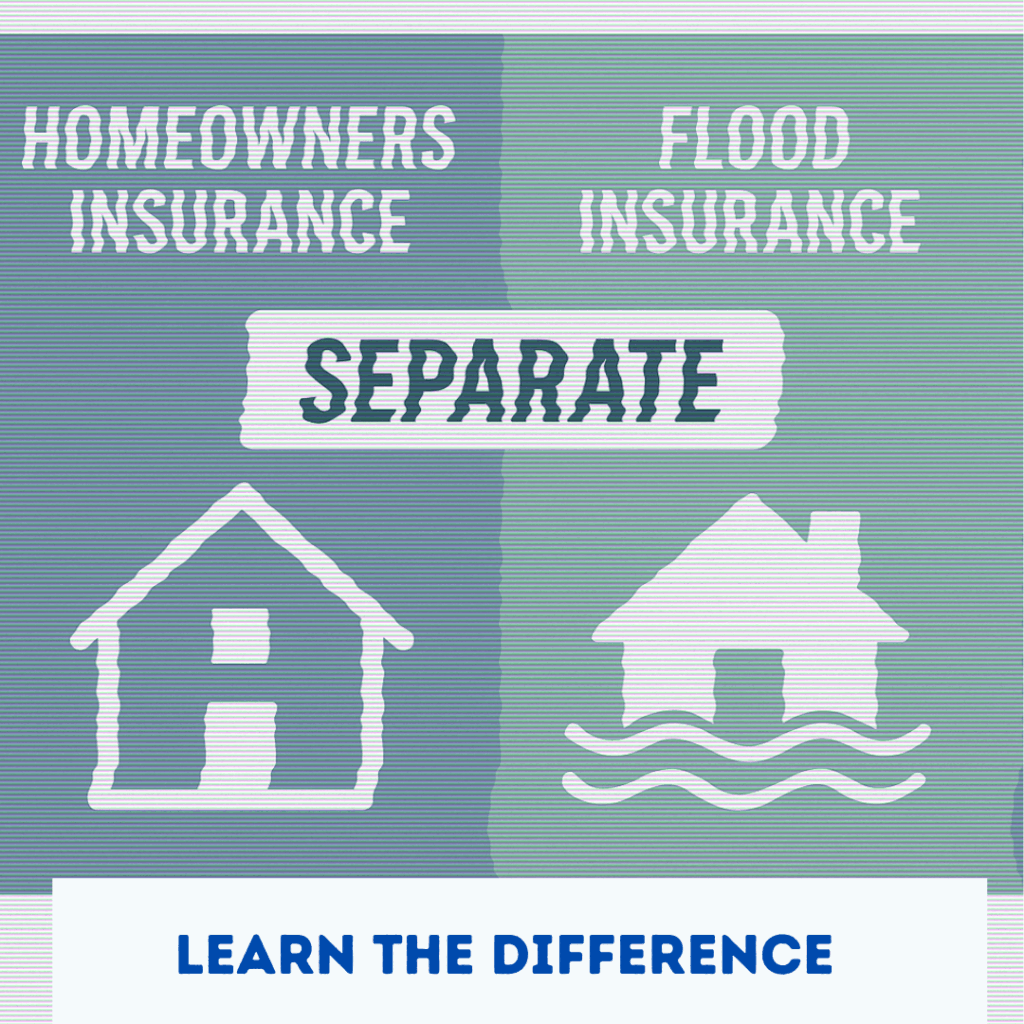
When it comes to protecting your home, it’s easy to assume that your standard homeowners insurance has you covered for just about anything. Unfortunately, one of the most common — and most costly — assumptions homeowners make is thinking flood damage is included in a basic home insurance policy.
Let’s set the record straight and break down what’s really covered under your standard policy, what flood insurance is for, and why it matters — especially in unpredictable weather regions like ours.
🚫 Myth #1: “My Homeowners Insurance Covers Flooding.”
Truth: It doesn’t.
Standard home insurance typically covers water damage that is sudden and internal — like a burst pipe or an overflowing washing machine. It does not cover flood damage caused by:
- Heavy rainfall
- Storm surges
- Rising river or creek levels
- Flash floods
- Hurricane-related flooding
To be protected from these events, you need a separate flood insurance policy, which can be purchased through the National Flood Insurance Program (NFIP) or private carriers.
🛡️ What Does a Basic Homeowners Policy Cover?
Here’s a simplified breakdown of what’s typically included in a basic HO-3 homeowners policy:
- Dwelling coverage: Repairs or rebuilds your home if it’s damaged by covered perils (like fire, wind, hail, theft, or vandalism).
- Other structures: Covers detached structures like garages, sheds, and fences.
- Personal property: Covers belongings like furniture, clothing, and electronics — from covered perils.
- Liability protection: Helps pay for legal costs if someone is injured on your property.
- Loss of use/additional living expenses: Covers temporary living expenses if your home becomes uninhabitable due to a covered event.
📝 Notice something missing? Nowhere in this list is flood damage included. That’s where flood insurance comes in.
🌧️ So, What Does Flood Insurance Cover?
A flood policy typically covers:
- Structural damage to your home and foundation
- Electrical and plumbing systems
- Appliances and HVAC systems
- Flooring and walls
- Debris removal
- Personal belongings (depending on the type of coverage)
It’s important to note that flood insurance usually has separate coverage limits for the structure and your contents. Talk to your agent about both!
🕒 When Should You Buy Flood Insurance?
Now. Seriously. Flood insurance policies typically have a 30-day waiting period before coverage begins. That means you can’t wait until a storm is in the forecast — by then, it’s too late.
Flooding can happen almost anywhere — and 1 in 4 flood claims come from homes outside high-risk flood zones. You don’t need to live near water to be at risk.
✅ What You Can Do Today
- Review your home insurance policy — do you know what’s excluded?
- Ask us for a flood risk assessment for your area
- Consider bundling flood and other optional coverages for better protection
- Get a quote — it’s often more affordable than you think
💬 Still Have Questions?
You’re not alone. Flood coverage is one of the most misunderstood areas of insurance — but it’s also one of the most important. Our team is here to explain it clearly, walk you through your options, and make sure your coverage truly matches your needs.
📲 Contact us today for a free consultation and peace of mind, rain or shine.
